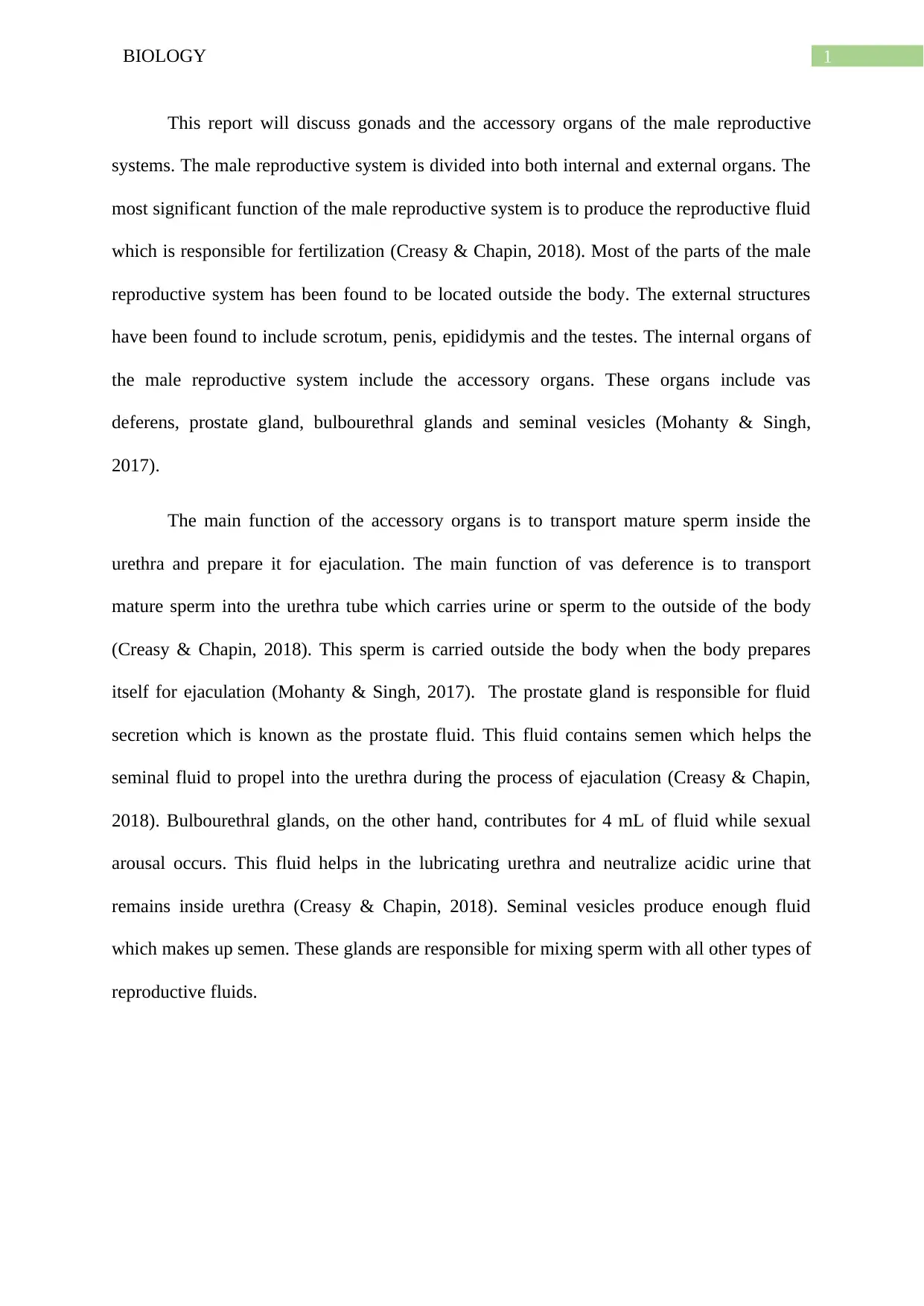Male Reproductive System: Sperm Production and Ejaculation Process
VerifiedAdded on 2022/08/25
|3
|407
|11
Report
AI Summary
This report provides an overview of the male reproductive system, detailing both its internal and external components. It discusses the functions of the gonads and accessory organs, emphasizing the role of the male reproductive system in sperm production and ejaculation. The report examines the specific functions of organs like the vas deferens, prostate gland, seminal vesicles, and bulbourethral glands. It explains how these organs contribute to the overall process of reproduction. References to scientific literature are included, providing a foundation for understanding the male reproductive system's processes and structures. This report offers a comprehensive insight into the biological mechanisms underlying male reproductive health.
1 out of 3









![[object Object]](/_next/static/media/star-bottom.7253800d.svg)